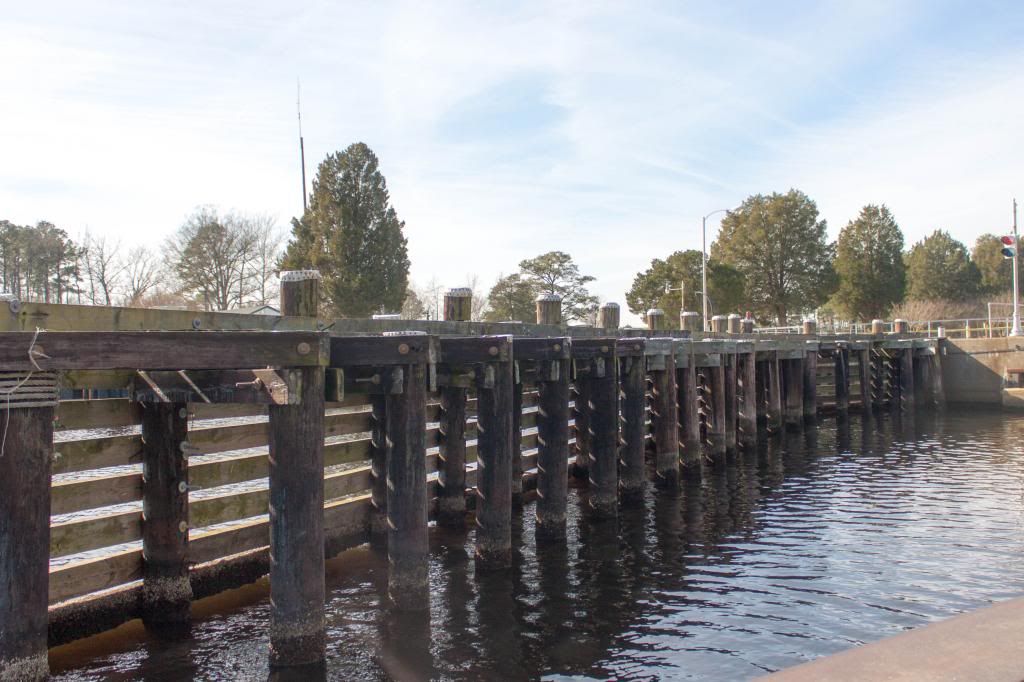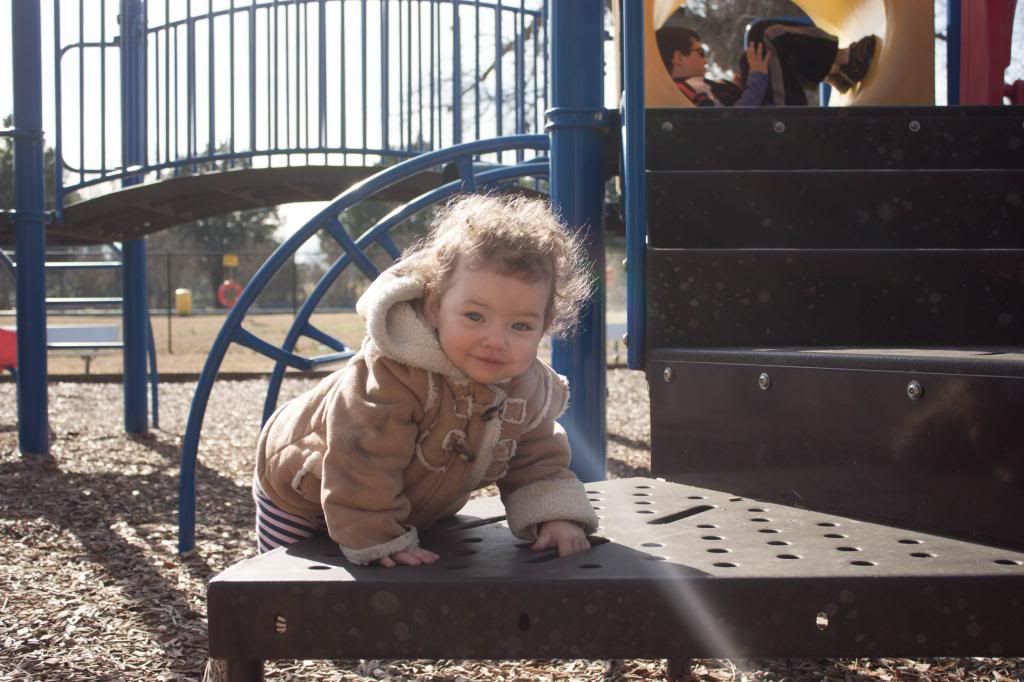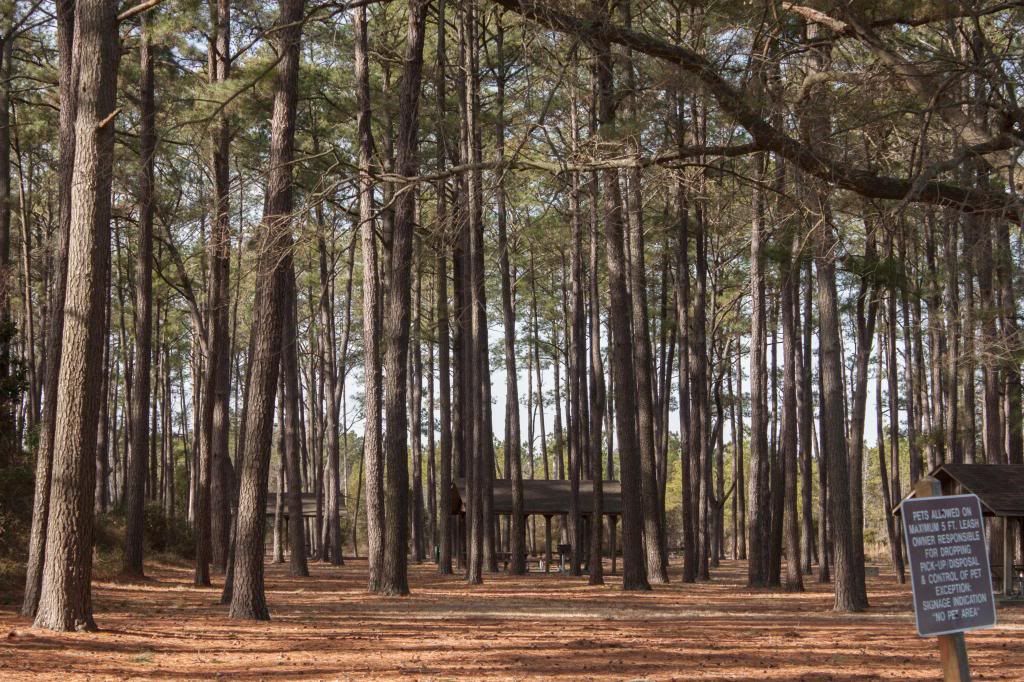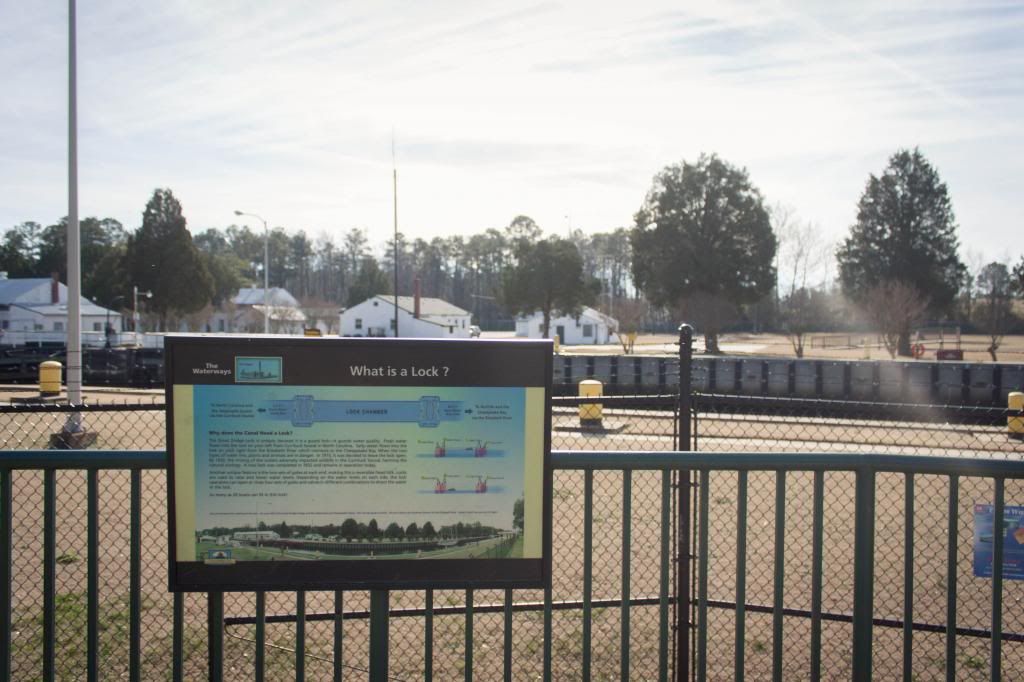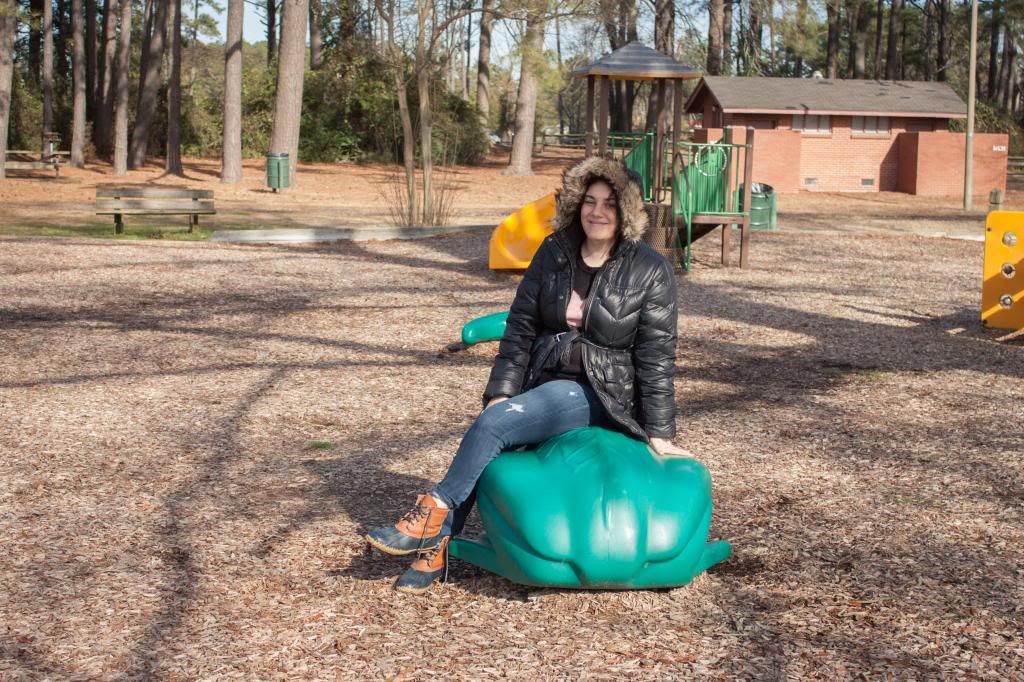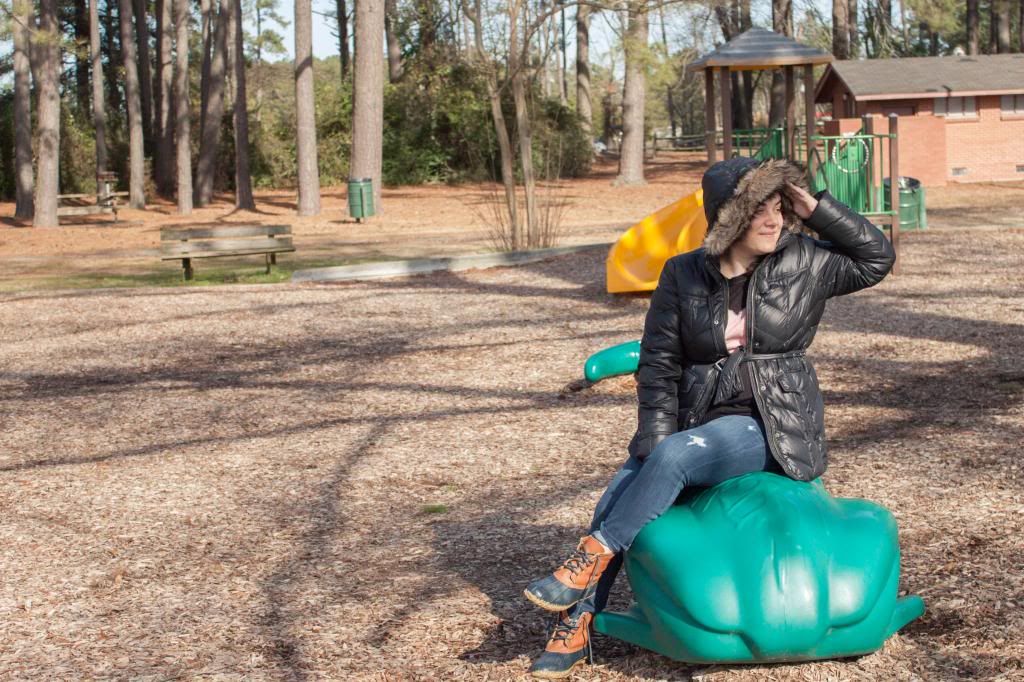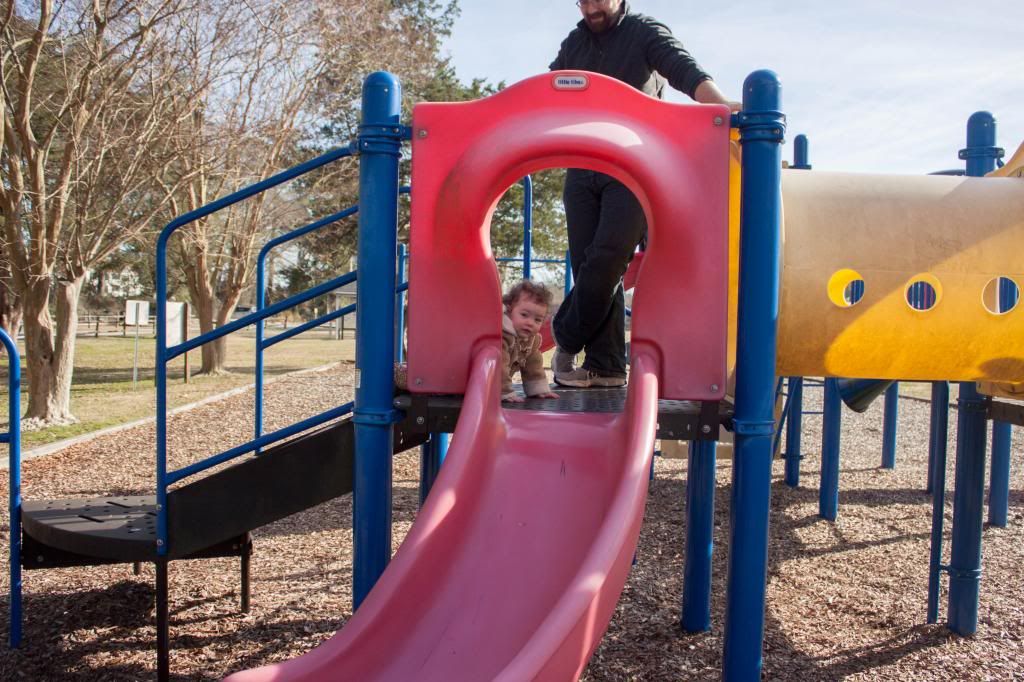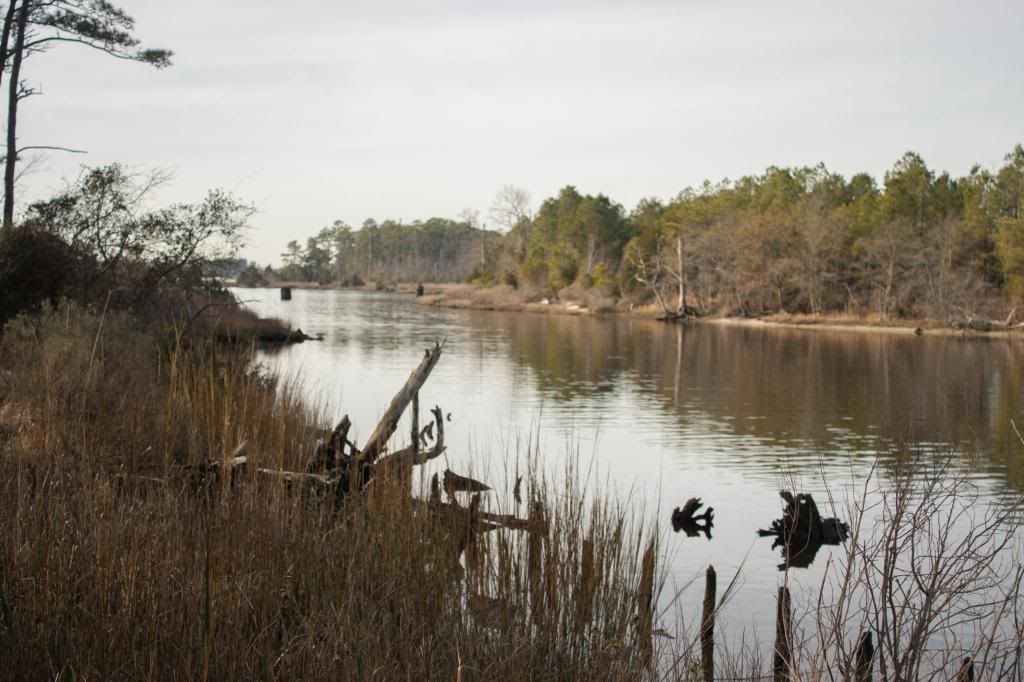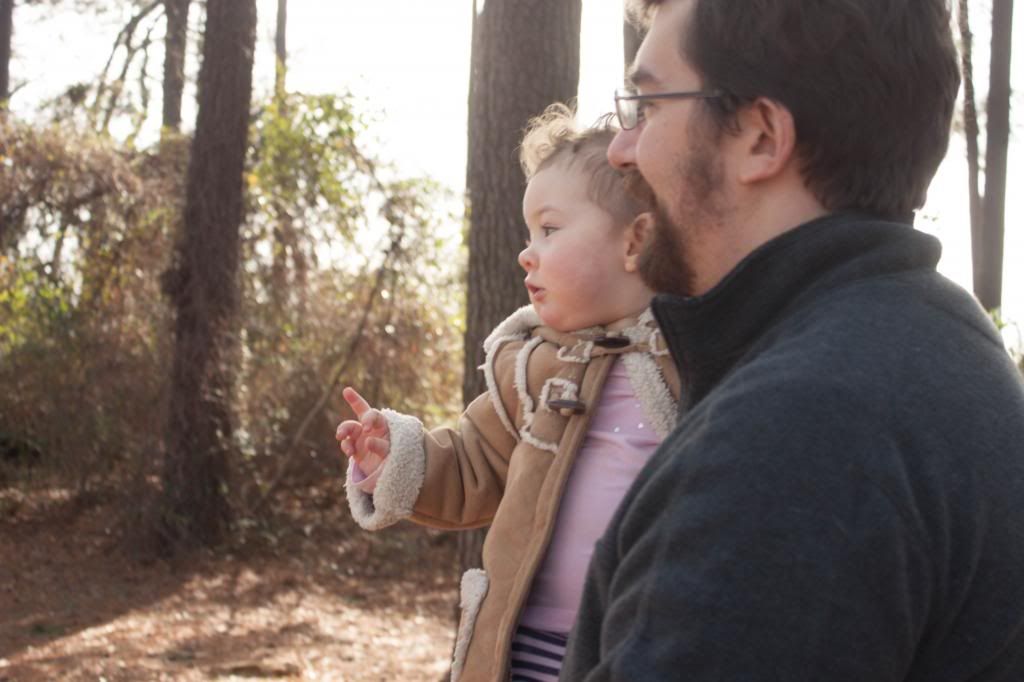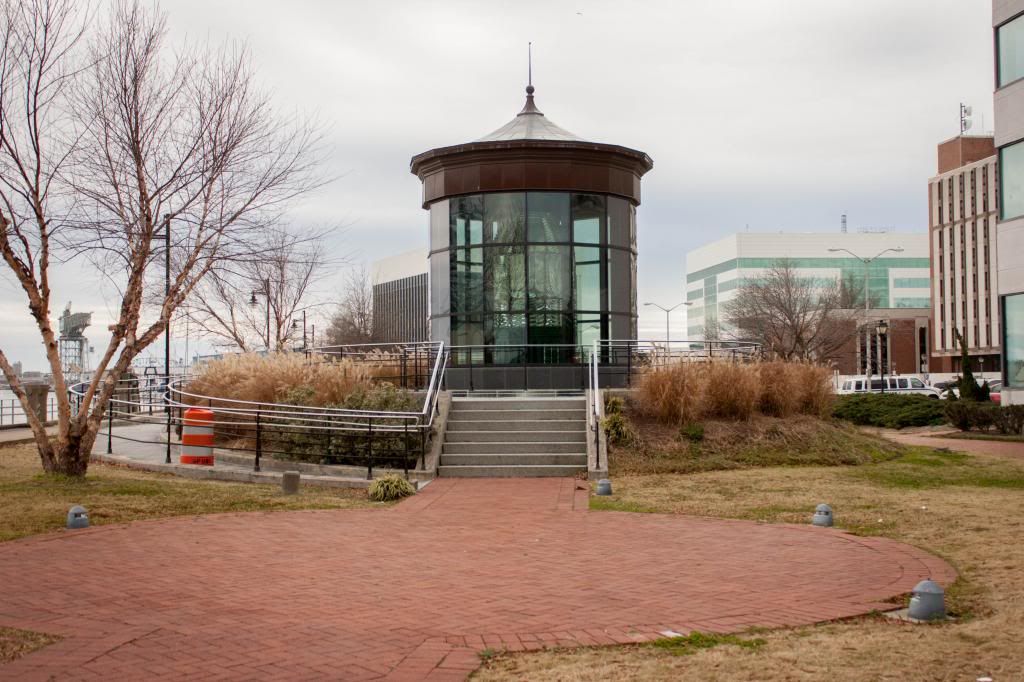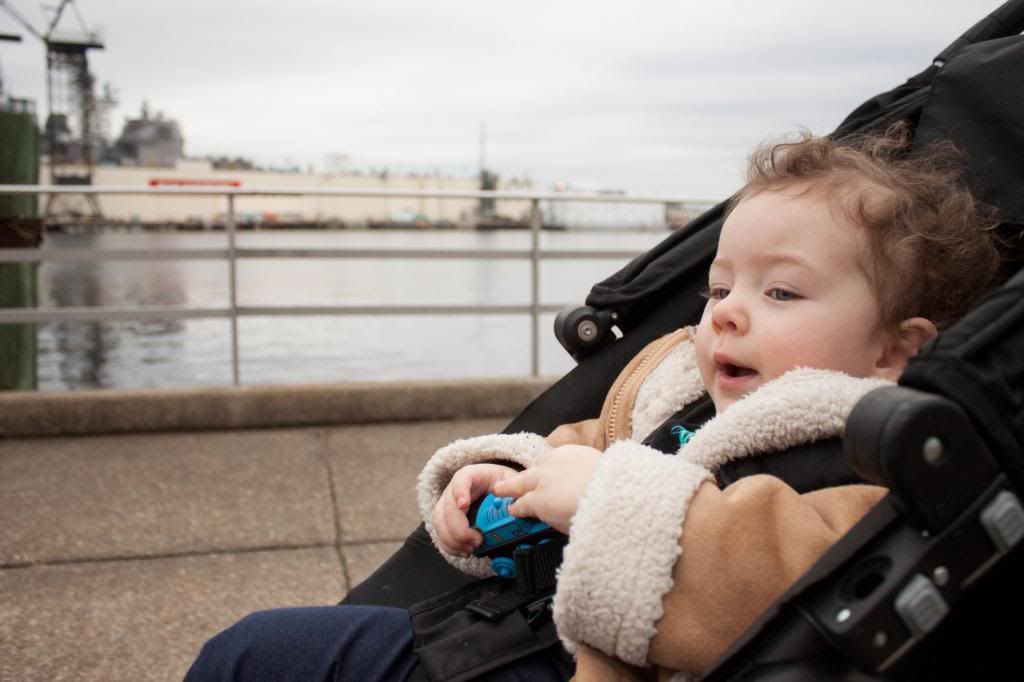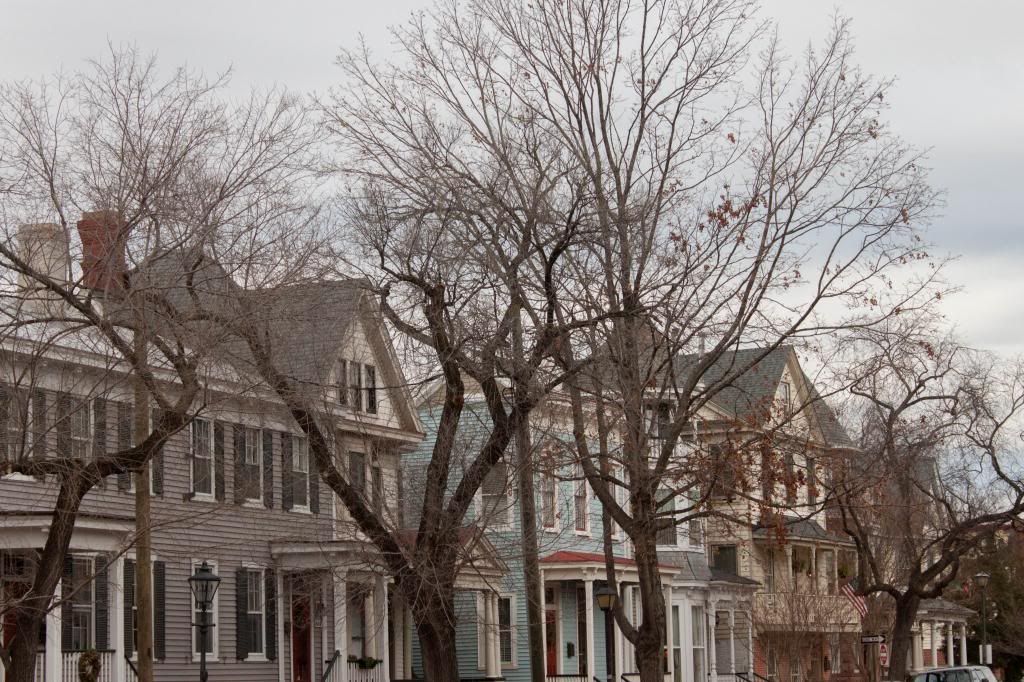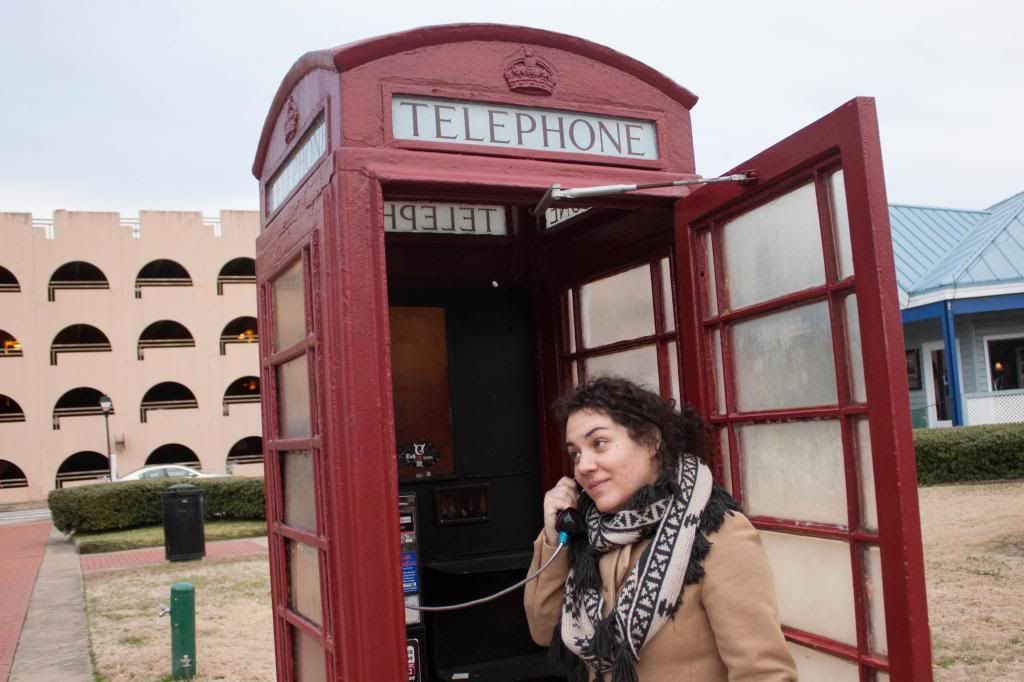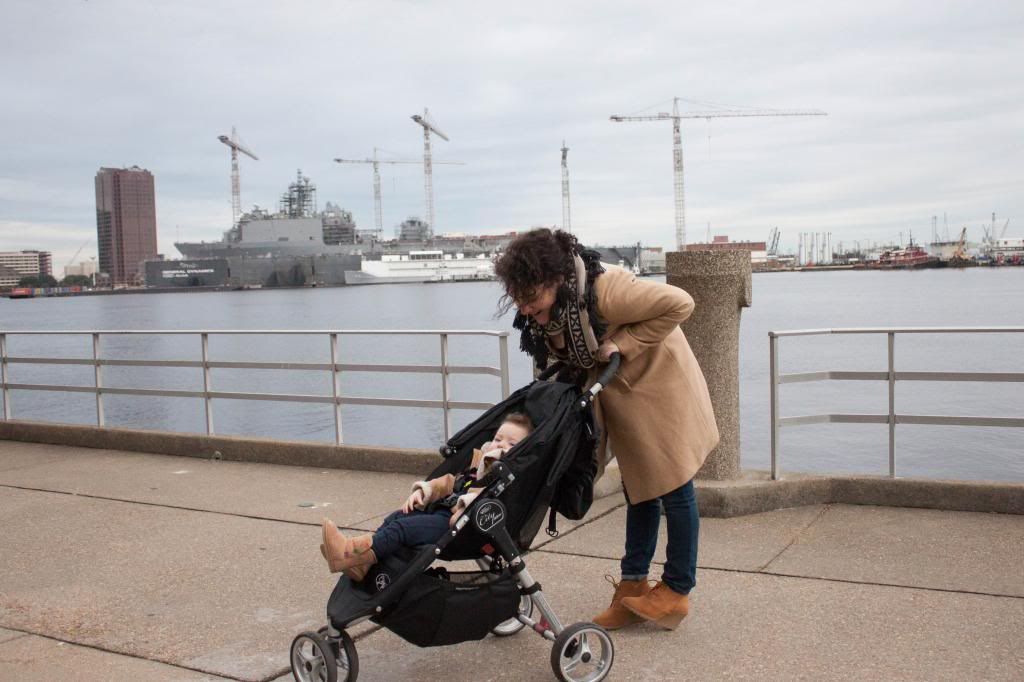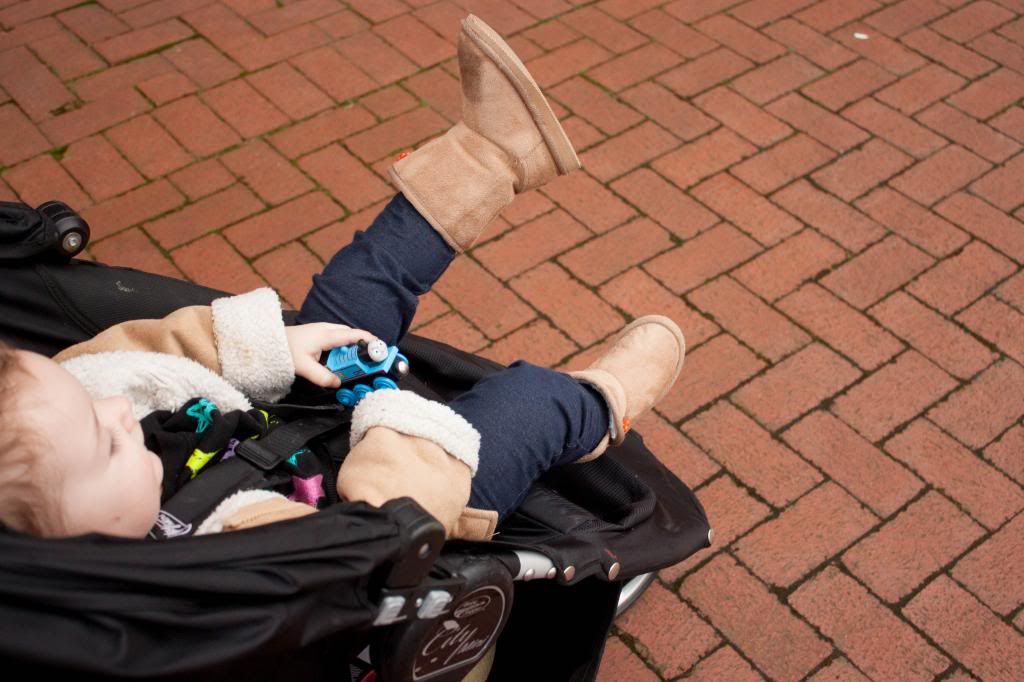
This past week has been a long one in our house. Anne came down with a nasty cold last Sunday, passed it on to me, and then I passed it to James. And then just when we thought the little one was almost all better, she came up to us and informed us that "ear HURT, mama." We took her to the pediatrician, the whole sneezing lot of us (we were very popular in the waiting room, as you can imagine), and found out that on top of a cough, A. also has a double ear infection.
We're on the mend now, but long story short: we spent a lot of time inside the house last week. Which means I don't have any fun adventure posts in the can to post this week.
But we did try to keep busy, all the same. One of the things I like to do when I'm not feeling bad enough to lay on the couch all day but am feeling bad enough to crave comfort food is to break Paleo edge and bake a loaf of bread. Anne likes it, too. Bread is a little bit like magic, even if you're an adult. To a kid, it's super-mega-amazing. This little ball of goop? Watch it get bigger and bigger and turn into something completely different.
I especially like this recipe because it requires minimal effort, as far as bread-making goes -- it doesn't need an overnight rise or a second kneading. An hour from proofing the yeast, I was pulling a fully-baked loaf from the oven. And it's delicious, the perfect satisfying texture -- chewy crust with a soft, fluffy interior. It doesn't get much better than that.
Unless...you add butter!
Which leads us to the second part of our kitchen magic show: homemade butter. I remember making this with a group of preschoolers back when I was a camp counselor in the summers during college. It's really the easiest thing in the world: fill a jar halfway with heavy cream. Screw the lid back on, and shake shake shake. Within 10 minutes of continuous shaking, the fat will start to separate from the whey. Shake it another five minutes, and you'll have real-life actual butter.

Some tips: First, a lot of online butter tutorials call for you to put marbles in the jar along with your cream. This is not necessary and is not recommended, at least in my opinion. It's a good idea to chill the jar in the fridge or freezer for a little while before starting, and I learned the hard way back in the day that sometimes marbles + cold + vigorous shaking = broken glass. We didn't use anything in our jar, and it turned out fine. Don't be taken in by the pro-marble movement!
Second, the butter from this method tends to be a little wet, so we squeezed it in a cheesecloth once to get the liquid out.
Third, you should add some salt to your butter after you scoop it out. About 1/4 teaspoon should do it. You can also add other stuff to your butter, if you want -- we added a touch of honey, but you could also do thyme or oregano (or cinnamon or pretty much anything). And don't forget about the buttermilk in the jar after you take the butter out!
This butter also tends to be excellently delicious.

Stay healthy, everybody! Wash your hands, for real.






























